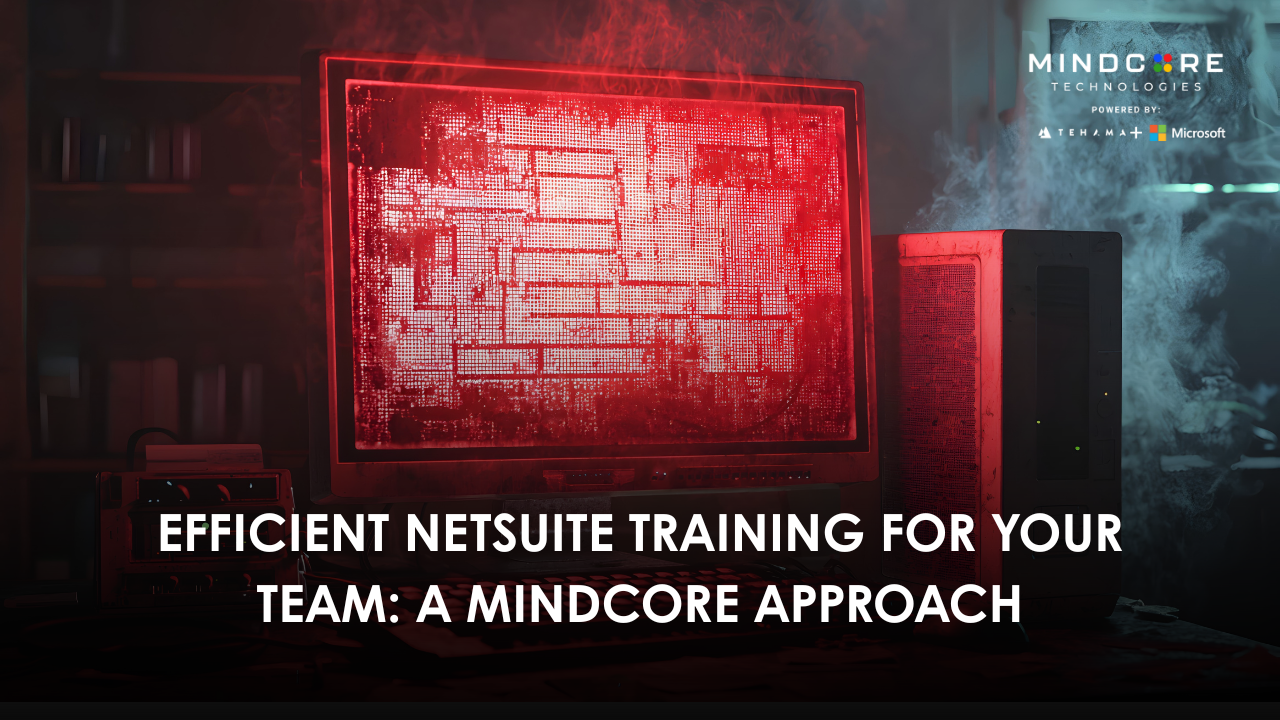Having the right ERP is important, but getting your team to actually use it well is what makes it valuable. Even the best tools fall short if people don’t know how to use them properly. That’s why training your employees to use NetSuite efficiently should be part of your growth strategy.
In this guide, we’ll go through real steps your team can take to build the kind of NetSuite knowledge that leads to better work, faster decisions, and fewer support tickets.
Why Training Impacts NetSuite ROI More Than You Think
NetSuite is powerful. But when your employees don’t know how to use it, they end up stuck, clicking the wrong buttons, or avoiding it altogether. That leads to slow workflows, mistakes, and frustration.
Great training builds confidence. It helps people understand how NetSuite fits into their job. It also reduces system errors, support requests, and manual work.
Companies that prioritize training see better use of dashboards, cleaner data, and smarter reporting. This helps with continuous improvement and long-term ERP adoption.
Step 1 – Identify Training Needs by Role and Workflow
Not everyone needs to know everything. A sales rep doesn’t need the same training as someone in accounting.
Start by identifying:
- Who needs access to what
- What tasks each person needs to do in NetSuite
Map out user roles and workflows. Then build training materials around those. This keeps learning relevant and avoids overwhelming people with extra information.
Aligning training to specific roles also matches how NetSuite handles role-based access and custom dashboards.
Step 2 – Use NetSuite’s Built-In Training Tools and SuiteAnswers
Don’t build everything from scratch. NetSuite includes its own tools that can speed up learning:
- SuiteAnswers: A searchable knowledge base with articles, videos, and step-by-step guides
- Learning Cloud Support (LCS): Online training modules that cover both basic and advanced topics
Encourage your team to bookmark help links inside NetSuite so they can solve small issues on their own. This supports post-implementation support and onboarding.
Step 3 – Train Using Live Data and Real Scenarios
People learn faster when training feels real. Instead of using slides, train your team inside the actual system. Use a sandbox environment so they can:
- Enter mock transactions
- Approve sample orders
- Run test reports
This helps users understand what buttons to press, what results to expect, and what to do if something goes wrong. It also reinforces NetSuite implementation success by making training part of real operations.
Step 4 – Create NetSuite Champions in Every Department
Some people in your company will naturally pick things up faster. Make them your NetSuite champions.
Give them deeper access and training so they can:
- Answer questions from their team
- Help troubleshoot small issues
- Guide others during new processes
A good NetSuite champion helps with team-specific tasks like fixing saved searches, creating simple reports, or teaching others how to use filters and forms. You can give them early access to updates so they can test changes before rollout. Some companies even reward champions through small bonuses or recognition programs to keep the momentum high.
This approach reduces support pressure on IT and helps each department own its part of the system. It also supports continuous system improvement at the team level.
Step 5 – Document Company-Specific Workflows and SOPs
Even with built-in NetSuite resources, your company’s way of doing things will be unique.
That’s why it helps to create your own training materials, such as:
- Internal how-to docs with screenshots
- Step-by-step guides for common tasks
- Links to shared folders with reference materials
You can use tools like ClickLearn or even simple Google Docs to capture these. This helps with SuiteApp enablement and ensures that any customizations are understood and followed.
Step 6 – Schedule Refresher Sessions and Update Trainings Quarterly
Training isn’t one-and-done. As your company grows and NetSuite evolves, your team needs to keep up.
You should:
- Schedule 1-hour refresher sessions every quarter
- Train new hires as part of onboarding
- Update training materials when workflows or fields change
You can also align these refreshers with new NetSuite releases so your team stays updated with changes. This supports ongoing adoption and platform ownership.
Step 7 – Measure Adoption With System Reports and Feedback Loops
To know if your training is working, measure it. Use NetSuite’s system reports to track:
- Logins and activity by user
- Search usage
- Error rates and help tickets
Also collect feedback directly from users:
- What’s still confusing?
- What’s working well?
- What needs more training?
Some common KPIs include first login completion rate, report generation frequency, or time to complete key workflows like order processing or invoice creation. If certain users are logging in daily but not entering data, it might mean they’re unsure about their tasks. Tracking these patterns can help target follow-up training more effectively.
You can use audit logs and governance tracking to spot where training needs to improve or where users might be skipping steps.
Final Thoughts: Empowered NetSuite Users Make the Whole Business Run Smoother
NetSuite is a tool, but it only delivers results when people use it correctly. Great training helps teams become confident, consistent, and collaborative.
From role-based onboarding to quarterly refreshers, every training investment leads to better performance and stronger data.
When combined with your NetSuite implementation, best practices, and SuiteApp tools, a trained team can do more with less friction.
When training is built into your system strategy—not just added on later—it strengthens your NetSuite rollout, supports customization, and builds confidence during system changes or unexpected events.
Help your team grow with the system. The payoff is faster decisions, cleaner workflows, and better business results—day after day.


